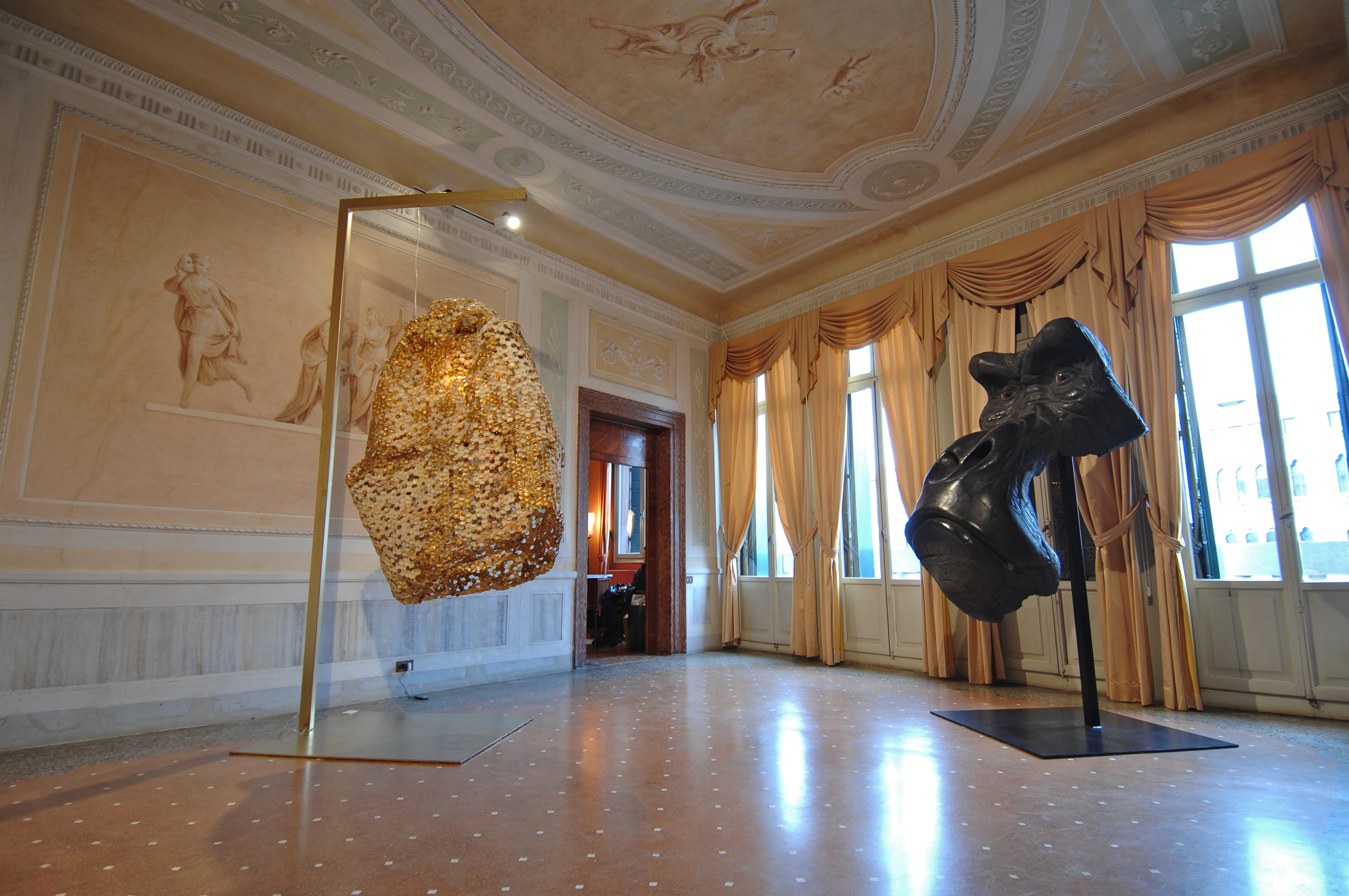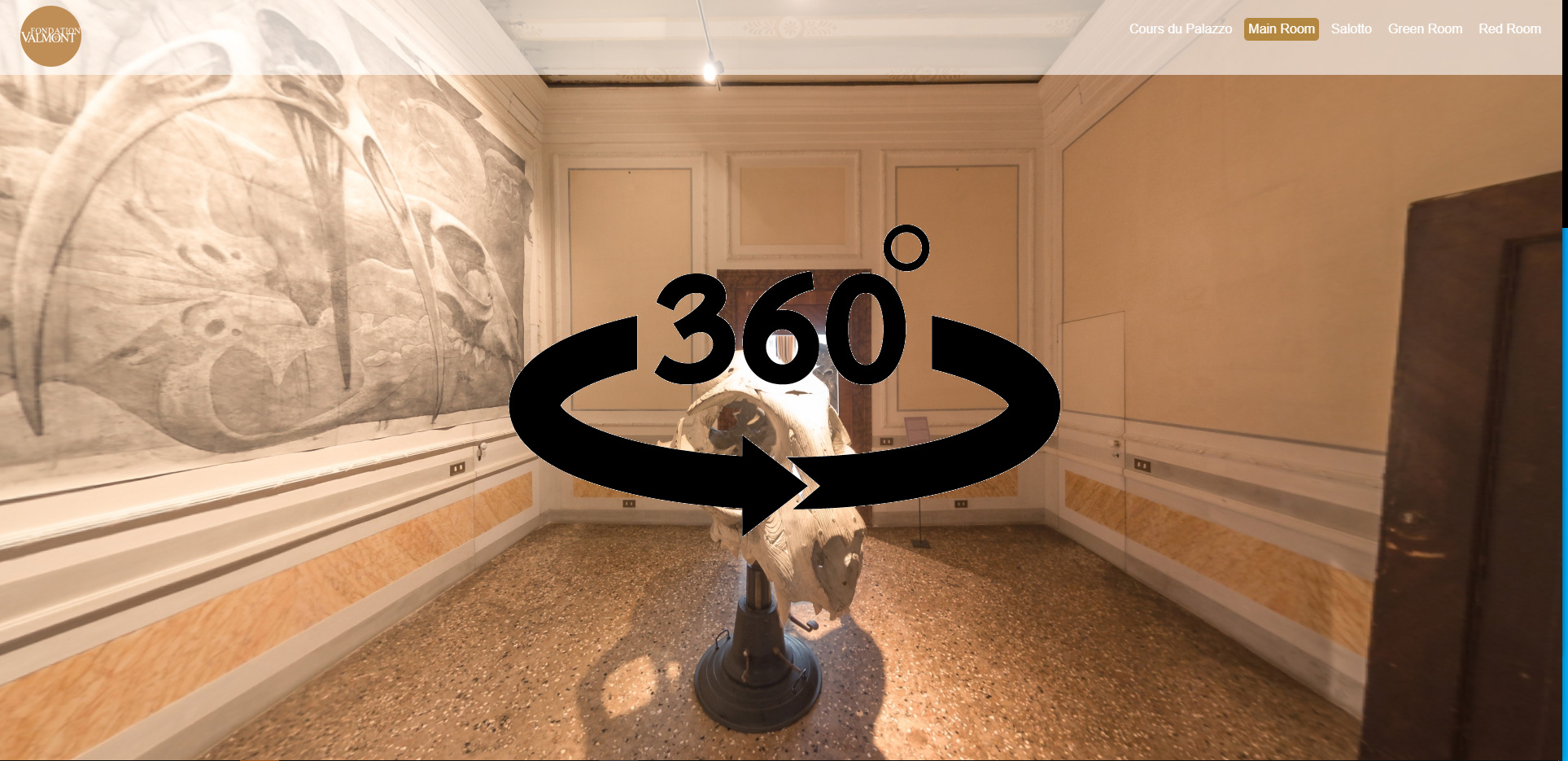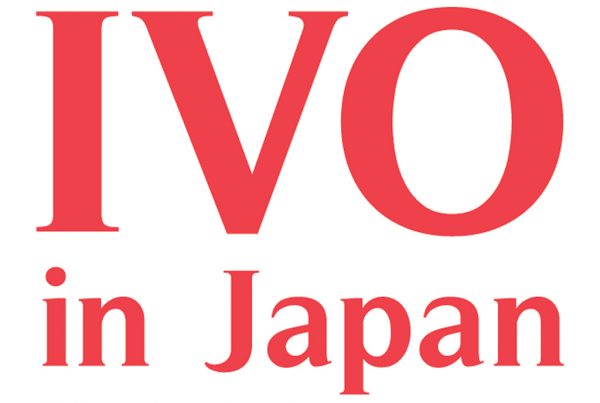Beauty And The Beast
13.05.2017 – 26.10.2017
The contemporary art exhibition “Beauty and the Beast” took place in the context of the 2017 Venice Biennale at Palazzo Tiepolo Passi, a magnificent 16th century palace overlooking the Grand Canal in 2017.
Inspired by the famous fairy tale, the exhibition presented works by Judi Harvest and Quentin Garel in a narrative framework that speaks of the fate of mankind.
Beauty and the Beast aims to address a highly topical and very important subject: the relationship established by human beings with the rest of nature.
The powerful works of Quentin Garel (drawings and wooden or bronze sculptures of wild animals and fossil skeletons of prehistoric creatures) embody man in the form of the Beast, which simultaneously alludes to two aspects: on one hand the inseparable and ancestral kinship which connects us to other species, and on the other the loss of the “humanity” of our race. Mankind, essentially comprising generous beings who want to be loved by other living creatures, is caught in an evil spell, the desire of power, and whose aim is to confront nature to its goals, opening up the road to its destruction, which turns out to be self-destruction.
The extraordinary works created by Judi Harvest represent the kingdom of bees, and embody the Beauty of nature as a cooperative and balanced relationship, but at the same time fragile and wonderful. Bees are nature’s messengers, the environment’s antennas. The life of bees and our own depend on their incredible work, which determines the existence and proliferation of a huge number of plants. A large part of our day-to-day survival is linked to pollination by bees: our food, about one bite in every three of the food we eat, or our clothes, such as in the case of cotton for textiles.
The “Beauty and the Beast” exhibition explores the themes of love and redemption, presenting the encounter between Man/Beast and Bees/the Beauty of Nature. The harmonious and positive example of bees could break the spell that human beings are under, but will the message only be strong enough once the danger of extinction is irreversible, getting through only at the point of their sacrifice? Will it be an irreversible catastrophe for the human race too?
The exhibition route will be set out in a Y-shape. In the first room on the main floor of Palazzo Tiepolo Passi, visitors will come face to face with Quentin Garel’s large sculptures, representing the Beast, which all human beings can identify with to some extent.
Moving to the second room, which represents the intersection of the Y, the visitors will assist to the meeting between Garel’s ape sculpture (gorilla with its deeply human eyes, beyond any “beastliness”) and a work of Harvest, inspired by bees and their hives. An exchange of looks in the Venice sunlight filtering through the windows overlooking the Grand Canal.
The two next rooms, one on the left and one on the right, represent the different outcomes of the dialogue between man and nature. By going left, visitors can enjoy the positive development of the relationship. A world of potential harmony and extraordinary beauty embodied by the works of Harvest, including a special installation with hundreds of different seeds made from Murano glass using three different production techniques. To the right, visitors can instead witness the continuation of the evil spell, which will lead to an uncontrolled manipulation of nature by man (Garel’s two-headed calf). Harvest’s honey jars will be displayed in a setting reminiscent of the enchanted forest found in many fairy tales, with branches almost enveloping the artworks like grabbing hands. But the vases will stand as symbolic time capsules, free to carry beauty and hope into the future.
By adopting a narrative paradigm, the “Beauty and the Beast” exhibition is intended first of all to be understandable and enjoyable for an audience of any age, including children. Through multiple levels of interpretation, the exhibition transcends art itself and aims to offer a conceptual, artistic and visual experience of an important topic for the future of the human race.




